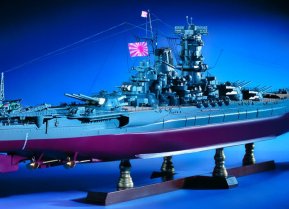TAI TF Kaan: Turkey's Stealth Fighter Is Real (But No F-35)
Turkey's aerospace industry marked a significant milestone with the successful maiden flight of the domestically-built TAI KAAN (TF) fighter, showcasing the nation's growing capabilities in defense technology.
Summary: Turkey's aerospace industry marked a significant milestone with the successful maiden flight of the domestically-built TAI KAAN (TF) fighter, showcasing the nation's growing capabilities in defense technology. This development comes after Turkey's exclusion from the F-35 Joint Strike Fighter program, following its acquisition of the Russian S-400 air defense system. The TAI KAAN, a result of over a decade of development and an intensified effort post-F-35 expulsion, is Turkey's ambitious project to create a new fighter that matches the capabilities and stealth of its counterparts. The aircraft, developed in collaboration with BAE Systems under a $125 million deal, aims to complement and eventually replace Turkey's F-16 fleet. Despite the controversies surrounding its defense acquisitions, Turkey's commitment to developing the KAAN underscores its determination to achieve self-reliance in defense technologies and maintain its strategic autonomy, even as it navigates complex geopolitical challenges.
Turkey's Stealth Fighter Made its First Flight
Last week, NATO member Turkey essentially proved to the world that its aerospace industry should be taken seriously as its domestically-built TAI KAAN (TF) fighter successfully completed its maiden flight. The aircraft has been in development for more than a decade – but was put into overdrive after Ankara was infamously expelled from the F-35 Joint Strike Fighter for its decision to acquire the Russian-made S-400 "Triumf" air-defense system.
Turkish Aerospace Industries confirmed Wednesday that the aircraft had completed its first flight, and shared a video of the milestone on X – the social media platform formerly known as Twitter – which showed the sleek jet taxiing on an airbase runway and then taking off, eventually reaching an altitude of 8,000 feet.
The prototype aircraft's landing gear remained deployed throughout the 13-minute-long flight, though it reached a speed of 230 knots (265mph), before touching down smoothly on the tarmac.
The TAI TF KAAN Do Fighter
Turkey's Defense Industry Executive Committee began making plans to develop a new fighter platform that could meet its peers in terms of capabilities and stealth – and which could operate alongside the F-35, and replace Ankara's aging fleet of F-16 Fighting Falcons.
The Turkish Armed Forces signed an agreement with Turkish Aerospace Industries (TAI) to draw up conceptual prototype designs for such a fighter. The manufacturing giant, along with TUSAS Engine Industries (TEI) worked collaboratively to come up with new concepts for the fighter, researching how to keep costs down while incorporating more sophisticated mechanical and electrical systems.
The Kaan is now being developed between TAI and the UK's BAE Systems, as part of a $125 million (£100 million) deal signed in 2017.
TAI TF KAAN: Domestic Turkish Fighter – Not the F-35, But Close Enough
In 2019, the U.S. kicked Ankara out of its F-35 joint strike fighter program after the country accepted the procurement of Russia’s S-400 air defense systems.
As previously reported, Washington and NATO argued that the F-35's cutting-edge technology cannot coexist with a platform that could function as a Russian intelligence collection vehicle.
However, the S-400/F-35 debacle was not the first time Turkey has been reprimanded and punished by NATO allies. Ankara lost access to engines for its Altay main battle tank (MBT) after it targeted Kurdish forces allied with the U.S. in Syria and Iraq, in addition to other provocations in the Mediterranean islands and waters.
Rather than back down on the acquisition of the S-400, Turkey built a brand new, state-of-the-art factory to manufacture its own fifth-generation fighter. That facility reportedly consists of some nine blocks that comprise around 63,000 square meters, while a working area just for the engineering team takes up about 25,000 square meters or just over a third of the total space. The facility features the latest manufacturing techniques, including the ability to employ 3D printing using titanium alloys.
In recent months, it had looked as if Ankara was showing "buyer's remorse" for its acquisition of the Russian anti-aircraft launching system, but according to a report from Bloomberg earlier this month, it appears that Turkey will retain the S-400. That might mean any F-35 reboot for Turkey could be dead and buried – and perhaps Ankara has confidence that while its KAAN may not be an F-35, it is close enough.
Author Experience and Expertise: Peter Suciu
Peter Suciu is a Michigan-based writer. He has contributed to more than four dozen magazines, newspapers, and websites with over 3,200 published pieces over a twenty-year career in journalism. He regularly writes about military hardware, firearms history, cybersecurity, politics, and international affairs. Peter is also a Contributing Writer for Forbes and Clearance Jobs. You can follow him on Twitter: @PeterSuciu. You can email the author: [email protected].


